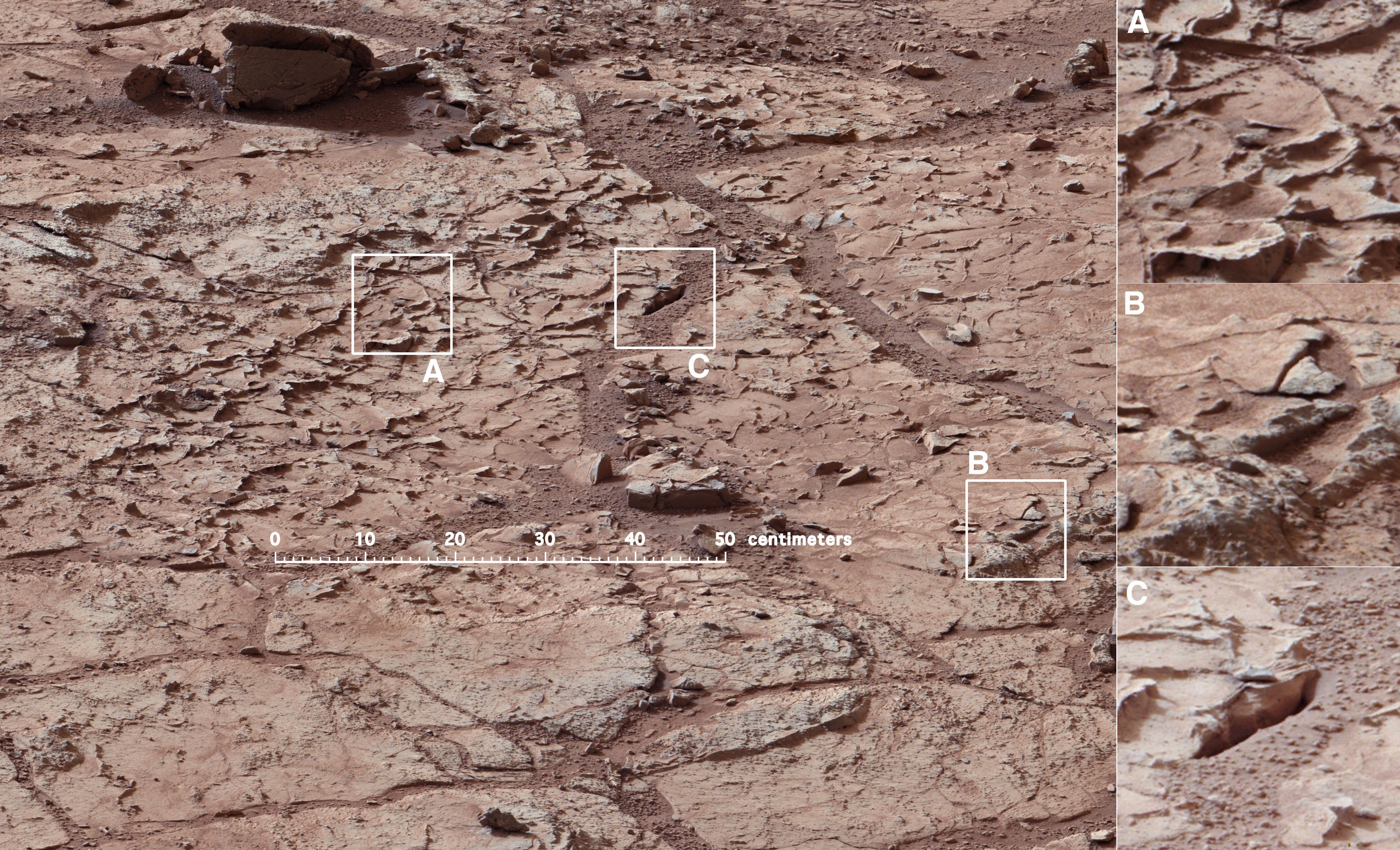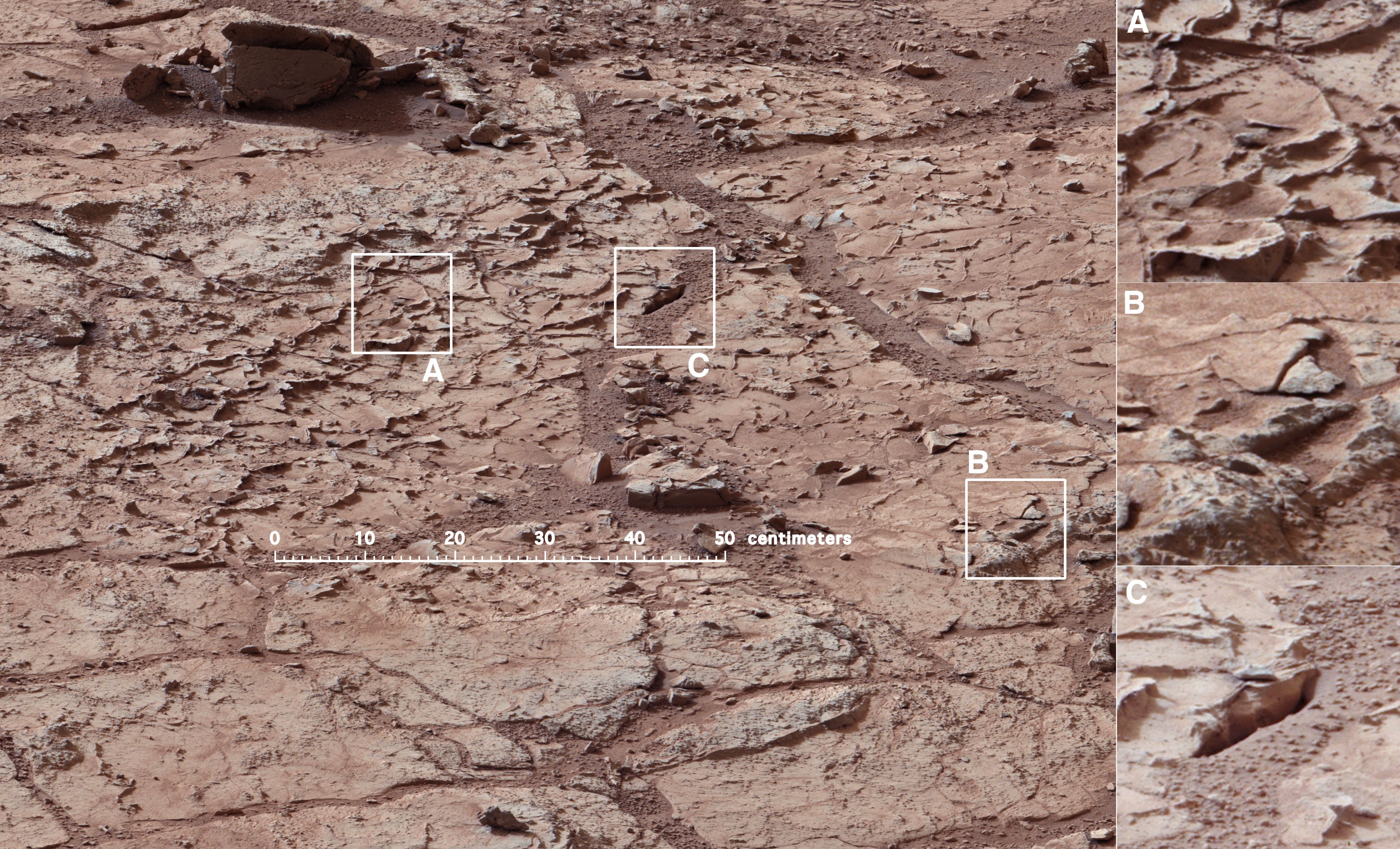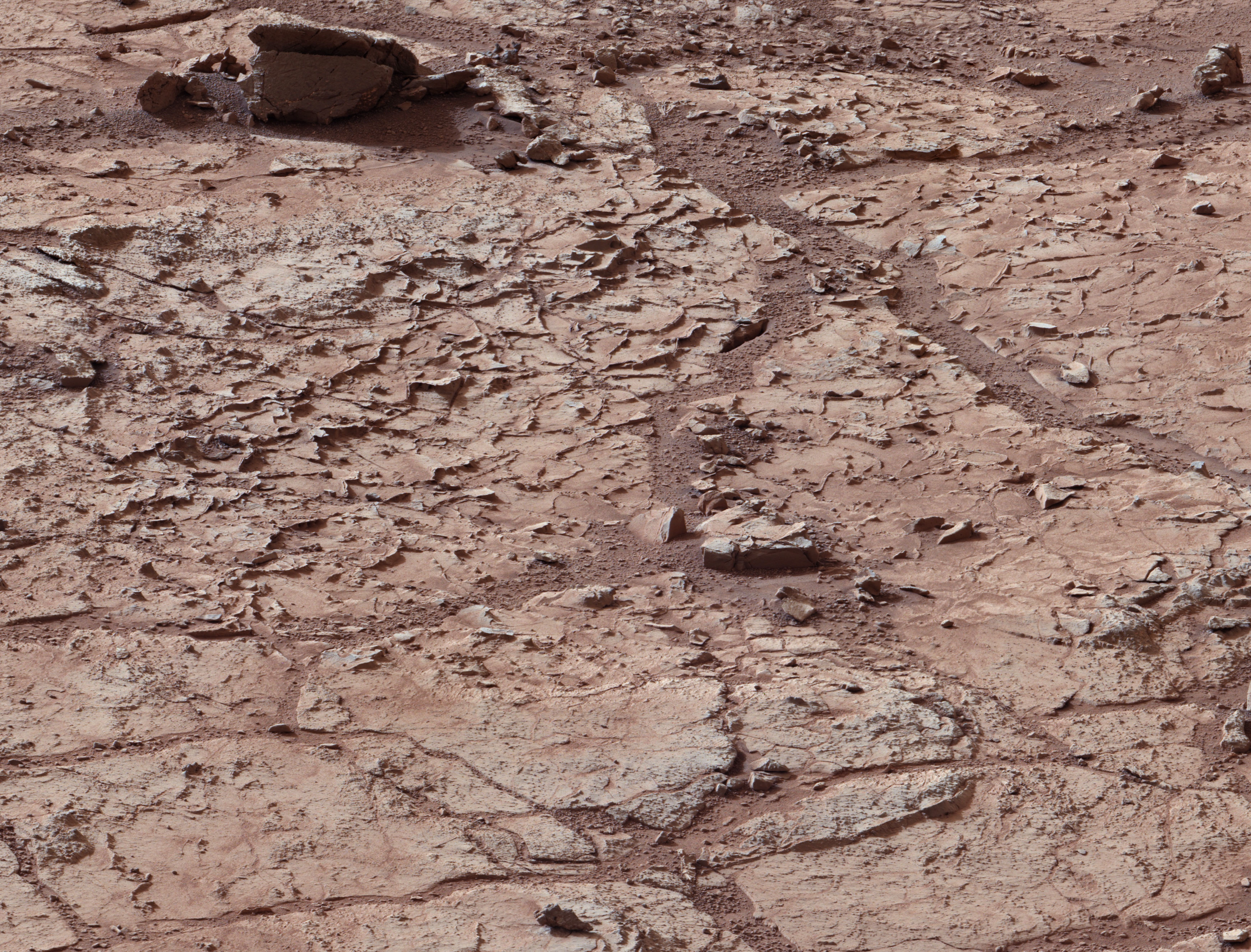John Klein’ Site Selected for Curiosity’s Drill Debut

| Credit | NASA/JPL-Caltech/MSSS |
|---|---|
| Language |
|
This view shows the patch of veined, flat-lying rock selected as the first drilling site for NASA's Mars rover Curiosity. The rover's right Mast Camera (Mastcam), equipped with a telephoto lens, was about 16 feet (5 meters) away from the site when it recorded this mosaic's component images, between 3:10 and 3:33 in the afternoon of the 153rd Martian day, or sol, of Curiosity's work on Mars (Jan. 10, 2013).
The area is shot full of fractures and veins, with the intervening rock also containing concretions, which are small spherical concentrations of minerals. The scale bar on the left image is 19.7 inches (50 centimeters) long. On the annotated version, three boxes, each about 4 inches (10 centimeters) across, designate enlargements on the right that illustrate attributes of the area.
Enlargement A shows a high concentration of ridge-like veins protruding above the surface. Some of the veins have two walls and an eroded interior. Enlargement B shows that in some portions of this feature, there is a horizontal discontinuity a few centimeters or inches beneath the surface. The discontinuity may be a bed, a fracture, or potentially a horizontal vein. Enlargement C shows a hole developed in the sand that overlies a fracture, implying infiltration of sand down into the fracture system.
An unannotated version is also available.
The image has been white-balanced to show what the rocks would look like if they were on Earth.


